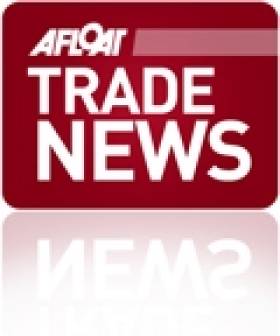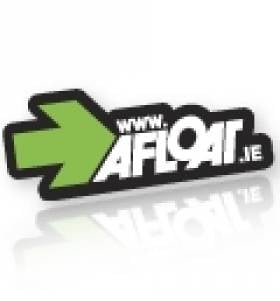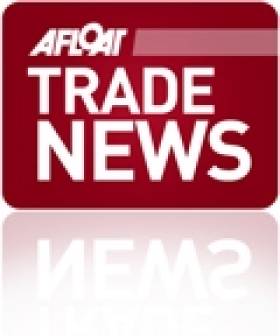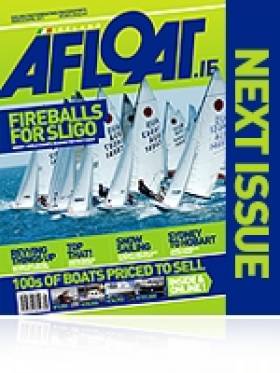Displaying items by tag: brokerage
#boatsforsale – Ireland's MGM Boats got off to a busy start at this weekend's opening of Boot, the Dusseldorf Boat Show. It's an upswing in fortunes for yacht sales that that started off at the London Boat Show earlier this month where the international brokers also reported the strongest interest in five years. The MGM Yachts for Sale Stand is the only Irish and UK broker exhibiting on its own stand in Hall 4 of this week's massive German Show.
The Dun Laoghaire firm is promoting more than 300 used boats from its international brokerage listing as well as promoting the Aquador, Jeanneau, Sunseeker and Lagoon marques.
Crosshaven Boatyard Report Promising Brokerage Enquiry Levels for 2014
#cby – Brokerage sales for Cork harbour yacht broker Crosshaven Boatyard (CBY) in 2013 was steady with some boats going abroad but thankfully the majority staying in Ireland.
Recent boat sales for CBY include a 2006 Jeanneau Merry Fisher 925, 1998 Jeanneau Sun Odyssey 34.2, 1983 Beneteau First 30e and a 1984 Gib'Sea 76.
'Enquiry levels have been promising in the last few weeks' says CBY's Hugh Mockler who is looking forward to increasing sales in 2014.
'We are in a fortunate situation in that as soon as we sell a few boats on brokerage new additions appear i.e. we have just added an excellent 2005 Jeanneau Sun Odyssey 49 DS to our brokerage and we also have a 1975 Dufour 35 and a 1979 Rival 38 coming shortly,' he adds.
CBY is actively promoting new yacht sales too. The brand new Dufour 310 Grand Large which was launched at Paris Boat Show and the new Dufour 560 Grand Large to be launched in Istanbul next Month are also on their books.
Irish Boats for Sale - A 21 footer for €2,500 and a 26 footer for €6,000
Kerry's O'Sullivan Marine are offering a 1973 Bowman 26 with long keel. Ideal for coastal sailing. The yacht was in good condition, however, due to some malicious damage being done, it is now in need to a major clean up and repairs, especially to the electrics and navigation instruments, which have to be replaced. On the positive side, the engine - a Yanmar 20hp (2GM20), sails, rigging and upholstery are in good condition and with some tlc this boat could shine again! €5,950 and she's yours. Here she is.
Crosshaven Boatyard say the 21-foot Varianta K3 is a sweet boat to sail and is ideal for someone that is looking for a classic. We've double checked the price just to be sure and yes she's on the market for €2,450, an affordable way of getting you on the water and possibly a great project for this Winter? Check her out here.
Tipperary Boat Dealer 'Closes the Doors'
Tipperary Boat dealer Marine Action Boats Ltd, based on the river Shannon at Birdhill has 'ceased operations' according to an announcement on the firm's website. The Sports boat dealership 'closed its doors' and ceased trading on December 31 2010, according to managing director, Tadhg Foley. Marine Action Boats were sole importers of Crownline Sports Cruisers for Ireland, according to the website. The sports boat section of the marine trade market has been one of the hardest hit by the economic downturn. The firm also handled brokerage, repairs and boat maintenance. The full text of the announcement is as follows:
"Despite great efforts from ourselves and our loyal team, we would like to announce that we have ceased operations at Marine Action Boats, and we are no longer trading. We would also like to thank all our customers and our suppliers for their support over the past decade".
Afloat's March/April Issue Out Next Week!
Is there no end to the achievements of Irish boaters against seemingly impossible odds?
The winter may have been a time of hibernation for some of us but as the stories in Afloat's March/April issue will bear out Irish sailors have been battling the elements all winter long.
James Carroll competed in January's Sydney-Hobart offshore race and, much closer to home, Paul A. Kay journeyed through snow and ice in December from Dun Laoghaire to a new marina on Valentia Island.
As if to prove a point that we're down but not out, a winter of results on foreign waters includes a win in the Mirror World Championships in Australia and a top Olympic result in Florida, USA.
They are gutsy performances from youth teams that shows, if nothing else, the next generation of Irish sailors is really up for a fight. All this plus lots, lots more on news-stands next week!
Selected contents from Ireland's only boating magazine include:
News
Surveyors Issue Boat Launch Warning, Buoyant Dinghies Buck the Market, Ice Diving in Ireland, German U-Boat Rediscovered in Cork Harbour, an Historic Trophy for South Pacific Dream Cruise, MGM open in Cork, Hugh Mockler joins Crosshaven Boatyard plus lots, lots more.
News Focus
A new masterplan for Dun Laoghaire harbour is badly needed but it needs buy in from all those that use it
Going Offshore
The tenth Dun Laoghaire to Dingle offshore race was launched in style
Marine Conference
Combating the downturn was the focus of a unique marine gathering on both sides of the Irish sea.

Gear Review
New dinghy gear, a new Crosshaven boot from Dubarry, a new raincoat for girls and an upgrade for Musto's MPX.

This Island Nation
The decision to shut down the fog signals was based on a detailed risk assessment. Tom MacSweeney on the loss of fog horns
Sailor of the Year
Anthony O'Leary of Cork is the Afloat.ie/Irish Independent "Sailor of the Year" in celebration of his outstanding achievements afloat nationally and internationally.
Tall Ships
W M Nixon looks at the realities of national sail training in the 21st Century.
Tall Ship Conference
Ireland could yet have a tall ship to replace the Asgard II and the Lord Rank, if a new group formed to press for a replacement is successful
Racing update
Ulstermen's World Title, Topper worlds for Dun Laoghaire, Two Irish campaigns line up for Figaro Race, SB3 Sailors Cry Foul at Dun Laoghaire Parking Fees and an Irish entry in the Moth worlds in Australia, Irish Mini 6.50 Campaign in Prospect.

Youth Worlds preview
Results achieved abroad this Winter are the backbone for further Irish youth
success

Figaro Preview
Two fledgling Irish La Solitaire du Figaro campaigns edged closer to the start line last month
Volvo Dun Laoghaire Regatta
Volvo Dun Laoghaire regatta has taken in 22 entries six months ahead of the first race of the biggest regatta in Irish sailing.
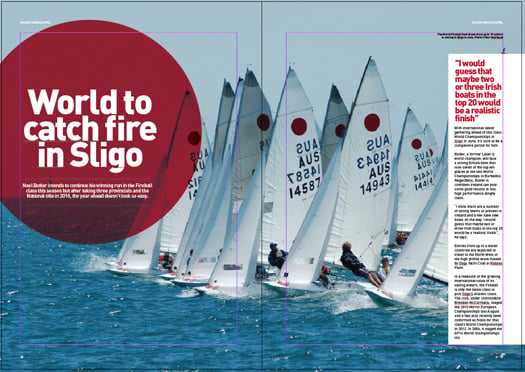
Fireball Worlds preview
Dun Laoghaire's Noel Butler intends to continue his winning run in the Fireball class this season but the year ahead doesn't look so easy as the World Championships come to Sligo
Sovereigns cup preview
Up to 30 Quarter tonners will be at the Sovereigns Cup this year including one from New Zealand.
Shiver to deliver
A journey through snow and ice from Dun Laoghaire to Valentia Island
Sydney-Hobart Race
Outside of the Volvo Ocean Race, the Sydney Hobart is one of the world's most challenging offshore races. James Carroll Raced it in January.
Inland
As the cuts begin to bite, it may be time to look at the British direction for our waterways, writes Brian J Goggin
Dubarry Nautical Crossword
Soundings
A Google aerial photo proves useful navigating for Baldoyle Estuary
- Anthony O'Leary
- Dun Laoghaire
- Tom MacSweeney
- Harbour
- MGM Boats
- Asgard II
- World Championships
- Dinghies
- Olympic
- Cork Harbour
- Valentia
- Mirror
- Dingle
- youth
- Lord Rank
- Island Nation
- Hugh Mockler
- Dubarry
- Tall ship
- brokerage
- sydneyhobart
- fog horn
- moth
- Mini 6.50
- Uboat
- Fireball worlds
- Sovereigns
- James Carroll
- Paul A. Kay
- Crosshaven Boatyard
- Baldoyle
- MPX
- W M Nixon
Haughey Yacht 'Celtic Mist' is For Sale
The 52 footer that has a cruising speed of 6 knots has been put up for sale by the family of the former Taoiseach with an asking price of €175,000.The boat is lying on the Isle of Wight.
The full details and photos from the broker are HERE.
The sale has created considerable media interest. Examples HERE and HERE.


























